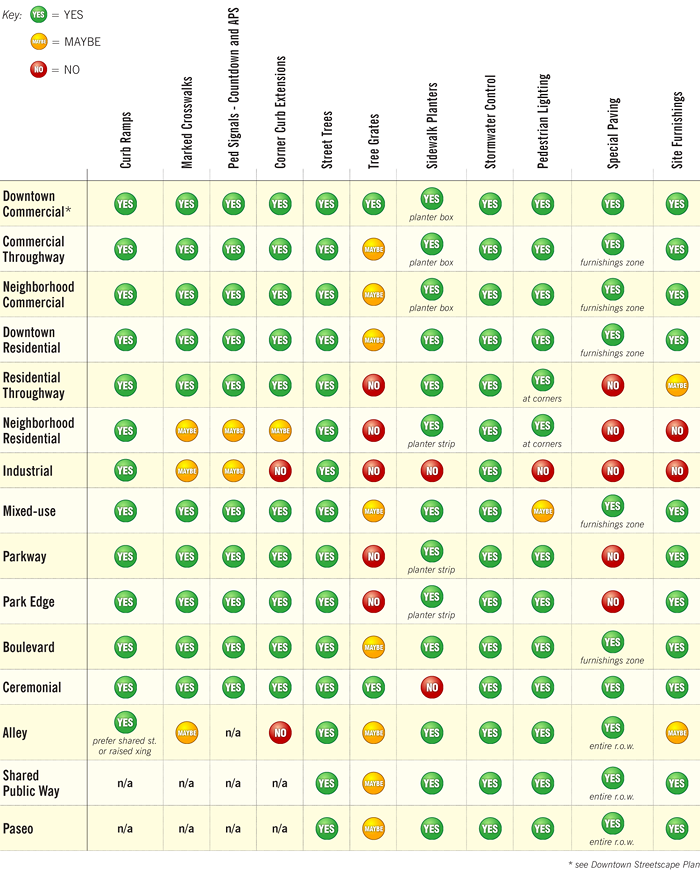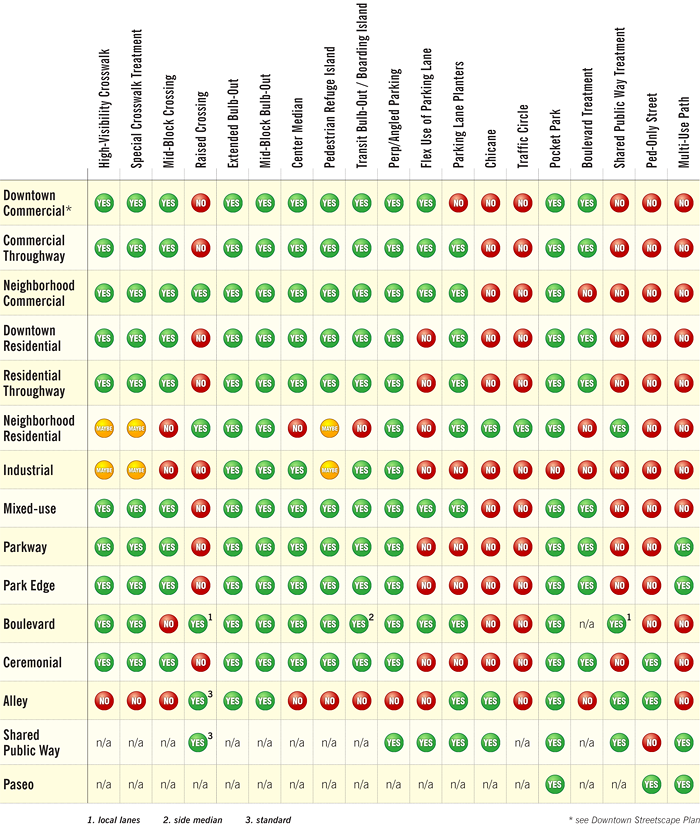Good street design begins with an understanding of the street context. Different streets have different conditions, and merit differing design considerations. When considering design improvements to a street, the project sponsor should start by identifying the street type, and designing features appropriate to it.
Each street type has a set of standard elements and case-by-case additions.
- Standard elements should be included for all street improvement projects on that street type.
- Case-by-case additions are generally appropriate for the street type on a case-by-case basis. They should be considered for projects as capital and maintenance budgets, physical constraints, and neighborhood preferences allow.
Table 1: Standard Improvements by Street Type
Notes:
This table is meant as a general guide; there may be cases where appropriate treatments for a particular street type are different than described in this table, depending on physical conditions, land use, and transportation characteristics.
In some cases, including all standard improvements may be limited by available funding. Not every project need have every standard improvement; however, projects should be consolidated wherever possible to maximize ‘completeness’ of improvements.
Individual elements should follow guidelines for each project type.
Table 2: Case-by-Case Additions by Street Type
Notes:
This table is meant as a general guide; there may be cases where appropriate treatments for a particular street type are different than described in this table, depending on physical conditions, land use, and transportation characteristics.
Individual elements should follow guidelines for each project type.







 Copyright © 2015
Copyright © 2015